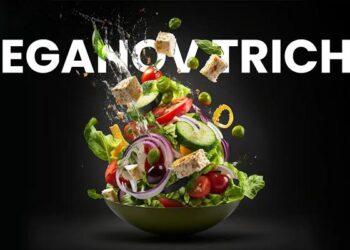Buying groceries from your local grocery store was once the only option. Supermarkets, on the other hand, are not the only source of food. There are numerous additional options available, including grocery stores, convenience stores, and even internet retailers. All of these locations provide a wide range of options. Glass vessels were used to store foods and liquids in Ancient Egypt and Syria, and the use of bottled and jarred packaged goods dates back to that time. The technology for making bottles hasn’t evolved much over time. Until the late 1800s, when cans became popular, the glass container was the standard container. Glass Bottles have seen a return in popularity in recent years, as more people opt for glass containers for their beer and wine.
Glass Bottles And Jars – Types, Advantages, and Disadvantages
On the market today, there are many different varieties of bottled and jarred packaged items. Because plastic is lightweight and inexpensive to create, it can provide great protection for goods being shipped internationally.
Glass bottles were a prominent kind of bottled and jarred packaged items for liquids in the United States. Beginning in the 1960s, there was a progressive transition away from the glass in food and beverage containers and toward plastics. This is due to a number of advantages that plastics provide, including reduced cost, lighter weight, improved look, and variety.
Solid waste is a worldwide issue. That’s why we created this guide to assist you in resolving the complex trash disposal problem.
Although you may not realize it, the packaging sector is difficult to break into. More corporations are looking to produce beverages in bottles, regardless of whether there is a high or low demand for a product.
Consumers choose bottled and jarred packaged goods because they are portable, handy, and some are even marketed as fresh. Jars with appealing aesthetics make for a unique product, while bottled and jarred packaged foods are  easy to transport.
easy to transport.
Six different types of bottles and jars are used in food packaging.
1. Bottles made of plastic
The most prevalent item found in trash in distant locations is plastic bottles and jarred packaged goods, which can take up to 1,000 years to degrade. Plastic bottles and jars have an ineffective recycling process, which means that when they are recycled, the quality is usually low, and only about a fifth of them can be recycled. Furthermore, when plastic bottles are disposed of in landfills, harmful substances are frequently released into the soil and groundwater.
Plastic bottles contribute significantly to pollution. Water and other beverages are served in them. Because they’re made of petroleum, which isn’t renewable, they can’t be recycled. This section will discuss plastic bottles and some of the issues they can cause.
2. Packaging made of cardboard
Compared to aluminum, tinplate, and plastic, cardboard bottled and jarred packaged items are more environmentally friendly and cost-effective. Because of its low production costs and ease of storage, shipping, and recycling, cardboard packaging saves the company more than metal and plastic packaging.
The most popular sort of packaging material is cardboard. It is inexpensive, lightweight, and recyclable. It can also be used to promote a business. To promote their products, several businesses employ cardboard packaging.
Keep a few things in mind while developing cardboard packaging for your product. These factors can include the material’s long-term viability, cost-effectiveness, and whether the design has any restrictions in terms of production.
3. Packaging for Metal Containers
In the food sector, metal containers are used to package and store a variety of foods. They’re typically made of tin-plated steel, a cost-effective, corrosion-resistant metal that doesn’t react with acidic foods. Metal containers can be used to store and preserve food by chilling or heating the contents of the container.
Metal containers are long-lasting, low-cost, and trustworthy. Steel used to manufacture these containers is often much stronger than the steel used to construct other types of metal containers. Steel is also a strong metal that resists corrosion better than most other metals. Metal containers, on the other hand, because they are largely constructed of steel, might take up more space than other containers.
4. Packaging made of wood
For both product and environmental considerations, wooden packaging might be a viable option. Every year, the use of wood in the packaging sector grows. The advantages of adopting this material are numerous, ranging from sustainability to aesthetics.
Natural tree components are used to make wooden packaging materials. They can be utilized to make a long-lasting material with a variety of textures and appearances.
Wooden packaging products can provide a number of benefits:
They are biodegradable, renewable, recyclable, and more cost-effective than many other materials due to their aesthetic and tactile features. They are also biodegradable, renewable, recyclable, and more cost-effective than many other materials.
However, there are certain disadvantages: Because wooden packaging is not as sturdy as plastic or metal, it cannot be utilized for the same duties, and customizing options are limited.
5. Packaging for Aluminum Containers
Aluminum is used to make bottled and jarred packaged goods, which is significantly lighter and more durable than glass and plastic. These containers have the advantage of being reusable and recyclable, as opposed to other materials.
They’re also a good substitute for the more expensive glass packing. Aluminum cans can also be shipped without additional packing because they are lightweight and sturdy. This saves money.
These features make these containers more environmentally friendly than steel or glass containers. Companies are turning to aluminum for their packaging needs even more as the popularity of sustainability has grown in recent years.
Aluminum containers are made to last a long time. They’re durable, safe, and useful.
When it comes to packaging food or liquids, aluminum containers provide four distinct advantages over other materials. Aluminum is a strong, lightweight, corrosion-resistant metal that does not react with food or drink.
And Aluminum containers are the most prevalent form of a container found on the market. Aluminum can be formed in a variety of forms and sizes, and it is commonly used to store liquids and gases. Milk, cheese, coffee, tea, and other foods can be stored in aluminum containers.
6. Packaging in glass containers
Glass jars are a great renewable resource that can also be recycled. They have a square glass shape with a variety of sizes, shapes, and thicknesses to choose from.
And Glass containers in the food sector have the advantage of not allowing bacteria to grow or releasing hazardous compounds when microwaved or frozen. They keep food in a sterile, contained environment, which is ideal for preventing infection and deterioration.
Glass containers are the greatest option for keeping liquids because they are usually sealed. They are frequently fashioned of tempered glass, which is both easy to clean and long-lasting. Tempered glass is used to make bottled and jarred packaged foods, which are easy to clean and long-lasting.
Advantages of packed commodities in bottles and jars
Environment-friendly
Glass is a material that may be recycled indefinitely. Because glass is devoid of metals, it can be recycled endlessly without compromising its quality or purity.
Because glass contains no metals, it is one of the most environmentally friendly materials because it can be recycled endlessly without losing its quality or purity.
Hygienic
Glass has a number of properties that make it useful in the food sector. It has no effect on the contents of the bottle, does not rust, and is readily cleaned with soap and water.
And Glass container packaging is a great way to keep and show off your goods. Glass is a non-porous substance that does not allow air, water, or other liquids to pass through it. As a result, it’s ideal for storing dry foods like cereals and pasta sauce. It also provides visual appeal because the transparency keeps the food from looking like ordinary containers.
Storage for a Long Time
Long-Term Storage is a benefit as well as a cost-effective, scalable storage solution that can be used for any type of data. The Long-Term Storage package offers businesses a cost-effective and scalable long-term data storage solution for any data.
You can now use some of the goods while the rest is conserved and carefully stored. The long-term storage challenge has been overcome. A solution has been found to the problem of long-term storage. For future generations, the excellent and the remaining are saved and appropriately stored.
Transparency
Transparency has become a critical aspect of packaging in a world where people are becoming increasingly attentive to their food. For products with a long shelf life, this is a serious issue. For example, the appearance of milk may differ from the content, resulting in thinner milk vessels despite the appearance of thick milk. Customers must be able to tell what they’re buying because of color constancy.
The color uniformity of a glass container is a good indicator of the content’s quality. Color consistency will be more consistent if the content is of excellent quality.
Duration
Packaging is a crucial component of the supply chain. It aids in the delivery of food and beverage products to consumers in a safe and secure manner. It also has an impact on the shelf life of different products.
When a product’s shelf-life is exceeded, it can be stored or sold without danger of spoiling. The shelf-life of food is affected by a number of factors, including packaging type, temperature, moisture content, and so on.
Packaging innovations today help to extend the shelf life of a variety of foods and beverages. Some packaging types are better for keeping refrigerated foods fresher longer, while others are better for frozen foods.
Disadvantages of packed commodities in bottles and jars
The health impact of packaged foods is the most important drawback. Food additives and artificial flavors, which are widely found in packaged meals, can not only alter the taste but also make it worse. They can, however, be hazardous and dangerous for human consumption.
According to a recent study, packaged goods have a negative impact on health. Artificial flavors and additives in food can result in a bad taste, a lack of nutritious value, and other issues.
Environment
The environment is an important part of our world. It is a part of our daily life and how we live since it gives us the oxygen, water, and food that we require to thrive. The impact of consumer packaging on the environment will be discussed in this section.
Because it accompanies items throughout their life cycle as they are used and disposed of, consumer packaging accounts for the majority of overall trash generated by consumers. Packaging serves to keep products clean and protected from damage during transportation and storage.
Cost
Packaging is an important element of the food sector, but it is important to examine the cost before beginning. It helps in advertising and marketing as well as storing and preserving food. There are benefits and drawbacks to food packing. When compared to perishable commodities like fruits and vegetables, one of the biggest drawbacks is the greater packing cost.
The food sector relies heavily on food packaging. It can be used to wrap, enclose, contain, or protect the contents of a food package. It also includes key product details such as nutritional content and components.
Conclusion:
Now you are aware of Glass Bottles And Jars – Types, Advantages, and Disadvantages. There are several pros and cons of bottle jars, and we are sure this article helped you to get knowledge about glass bottles. Keep visiting us to know more about Glass Bottles And Jars and other tech articles, Goodbye!






Discussion about this post